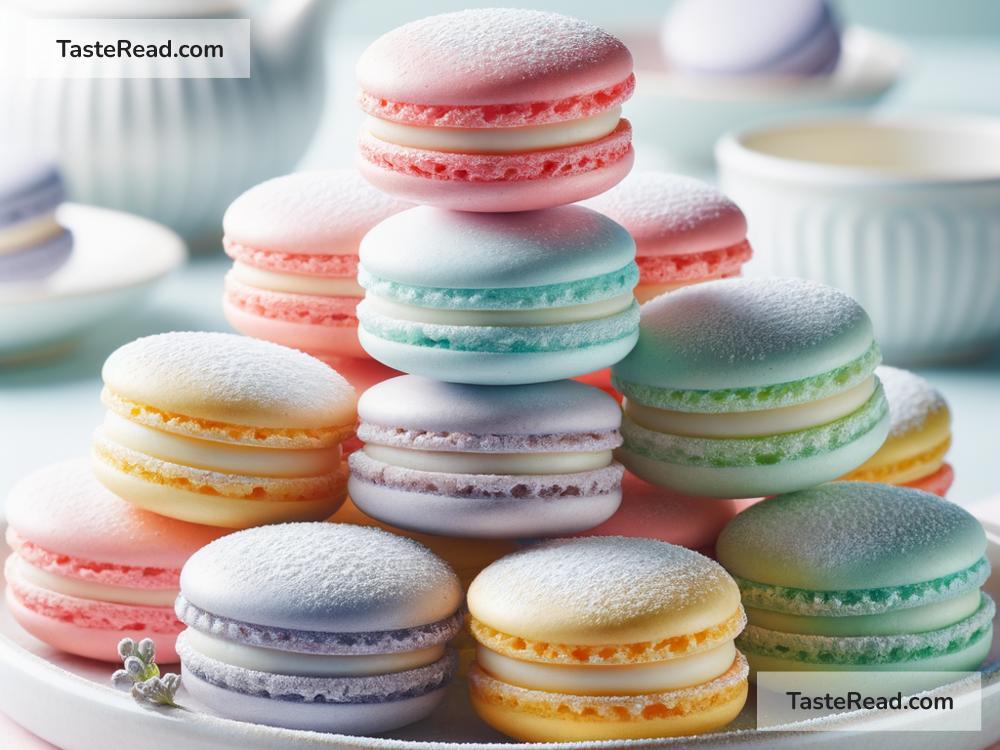Advanced Techniques for Baking Delicate French Macarons
French macarons, those light, airy, and colorful cookies that sandwich a delicious filling, have captured the hearts of dessert lovers everywhere. Making them, however, can be a bit of a challenge, especially if you’re aiming for that perfect shape, texture, and flavor every time. Fear not, though! With a few advanced techniques up your sleeve, you’ll be baking those delicate French macarons like a pro in no time.
Understanding Your Ingredients
The key to perfect macarons starts with understanding your ingredients. Macarons require very few components, but each plays a crucial role.
- Almond Flour: Ensure it’s finely ground to achieve a smooth top. If your almond flour is too coarse, don’t hesitate to give it a quick blitz in a food processor.
- Powdered Sugar: Acts as a sweetener and helps with the structure. Make sure it’s sifted to avoid any lumps.
- Egg Whites: These are the backbone of your meringue. Aging your egg whites (letting them sit in the fridge for 24-48 hours) can help reduce moisture and improve the stability of your meringue.
- Granulated Sugar: This is what gives your meringue its strength and shine. Adding it slowly to your egg whites is the secret to a stable, glossy mixture.
- Food Coloring: Gel or powder is preferable. Liquid food coloring can alter the consistency of your batter.
Mastering the Macaronage Technique
One of the most crucial steps in making macarons is the “macaronage” process – this is where you fold the dry ingredients into the meringue. Here, you’re aiming for a lava-like consistency; it should flow off your spatula in a thick ribbon and blend back into itself in about 30 seconds. Undermix, and you’ll find your macarons lacking feet (the ruffled edge at the base). Overmix, and they’ll spread too much or become hollow inside.
Resting is Essential
Once piped onto your baking sheet, letting your macarons rest is paramount. This step allows the surface of each macaron to dry out slightly, creating a skin. When they’re baked, this skin lifts to form the feet. Depending on your humidity, this could take anywhere from 15 to 60 minutes. You’ll know they’re ready if you can gently touch the surface without it sticking to your finger.
Oven Temperature: The Make-or-Break
Ovens can be tricky, and when it comes to macarons, precision is key. Many bakers swear by an oven thermometer to ensure the accuracy of their oven’s temperature. Experiment with your oven to find the optimal temperature and rack position. Generally, a lower temperature (around 300°F or 150°C) for a bit longer tends to yield more evenly baked macarons.
Troubleshooting Common Problems
- Hollow Macarons: This often happens due to overbeaten meringue. Beat just until stiff peaks form, ensuring not to overdo it.
- Cracked Tops: This issue can arise from either under-resting your macarons before baking or from an overly hot oven. Make sure to rest them adequately and check your oven temperature.
- No Feet: Too much moisture, undermixed batter, or under-rested macarons can lead to this. Ensure that your meringue is glossy and firm, your batter flows like lava, and that you’re resting your macarons long enough.
Flavor and Filling Innovations
Once you’ve mastered the basics, the real fun begins with experimenting with flavors and fillings. From classic vanilla and decadent chocolate ganache to more adventurous flavors like lavender or matcha, your options are virtually limitless. Just remember to keep flavored oils and extracts to a minimum, as too much liquid can alter the batter’s consistency.
Practice Makes Perfect
The final and perhaps most important piece of advice is to keep practicing. Each batch of macarons is an opportunity to refine your technique and learn. Keep notes of what works and what doesn’t, adjusting as you go along.
Macaron making is as much an art as it is a science, requiring patience, precision, and creativity. But with these advanced techniques in hand, you’re well on your way to baking up batches of beautiful, delicate French macarons that are sure to impress. Remember, even the most experienced bakers face a misstep now and then. Embrace the process and revel in the joy of creating these little pieces of confectionary art. Happy baking!


